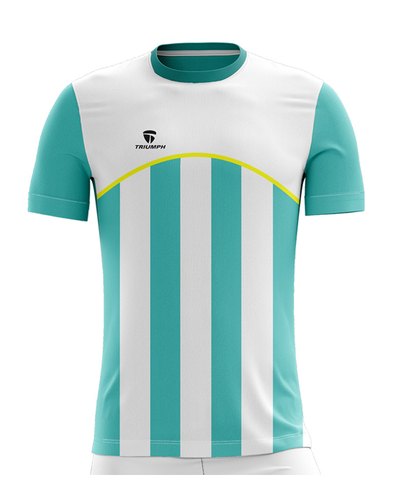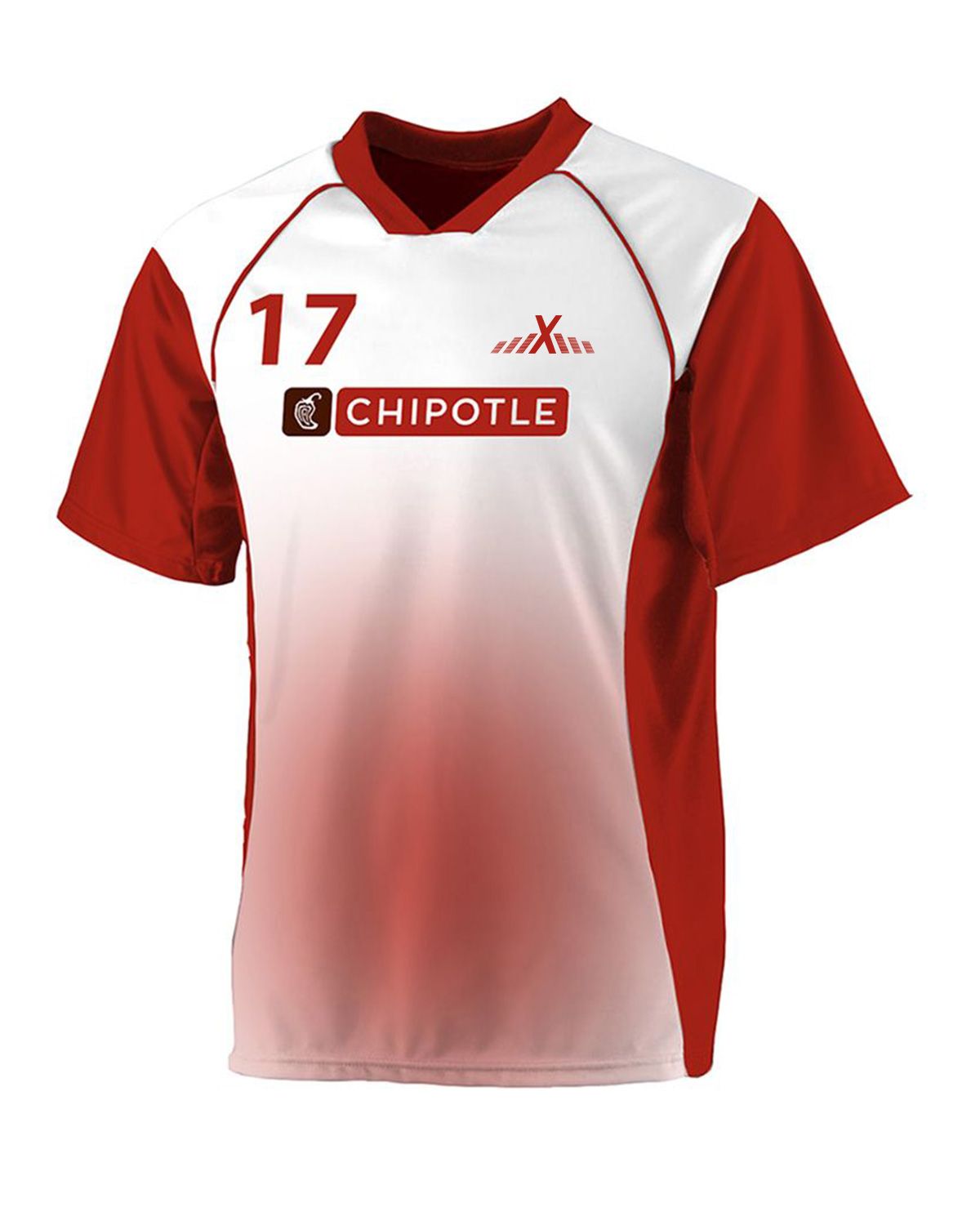Is Cheap Football Shirts Good Or Not?

The first thing to remember when buying cheap football shirts is that the price can vary wildly. In order to avoid overpaying for a replica shirt, you must first be aware of the different types of Cheap football shirts available. You must also be aware of the differences between replica and authentic shirts. By following these tips, you can buy a replica shirt without breaking the bank. This article will cover the differences between replica and authentic football shirts.
Identifying fake football shirts
The Back Four team agrees that counterfeit football shirts are becoming more prevalent. They’ve noticed a substantial increase in counterfeit football shirts over the past year, seized significant amounts of fakes online and at customs. Here are some tips for spotting fake football shirts. Look for cheap prices and pen writing on the inside label. The cheapest prices are usually from Asia. Check the tamper-evident tag, which is attached to the shirt’s button or garment label.
If you own a legitimate football shirt, you can identify a fake with ease. Make sure to check the inside wash labels. Player-issued shirts don’t have them, as they are often removed by the previous owner. Nike shirts typically contain a size guide inside. Vintage football shirts may not have a wash label, as the previous owner removed it. Check for a football shirt’s brand and label before buying.

Fake football shirts have subtle differences in color or material that are easy to spot. Some are darker or lighter than the original. Others are made from sub-par materials. Some people claim that these football shirts come from the same production lines as authentic kits, while others say that a factory worker skims off a good bargain to sell the fake football shirt. A few fakes are so subtle that they could fool almost anyone. However, a close inspection of the shirt will reveal whether it’s a fake.
If you’re unsure if a shirt is fake or authentic, do some research on the internet. Use the Internet to look up a specific shirt’s product code. A legitimate shirt will have a product code and a tag showing the manufacturer’s name, logo, and address. A fake shirt will have these details omitted. If a shirt is fake, it will not display any of these features, so it’s best to stay away from it.
Recognising iconic football shirts
In addition to its practical purpose, football shirts have a sentimental value and are a part of a team’s sporting identity. Whether it is the golden yellow of Brazil or the blue and white stripes of Argentina, the shirts have become icons over the years. For many, the distinctive white of Real Madrid’s away kit remains a constant reminder of the club’s history. A fan’s favorite football shirt can be worth hundreds of dollars.
Football shirts have a long history and are associated with special players and iconic moments in football. The Azzurri kit, worn by Marco Tardelli in the 1982 World Cup Final, is one such example. The Italia ’90 shirt, worn by goalkeeper Toto Schillachi, was another iconic shirt. The grey shirt worn by Dino Zoff during the 1982 World Cup has also been recognised as an iconic shirt.
In addition to England’s infamous shirts, there are also a number of other memorable shirts from other teams. England’s ’98 World Cup shirts brought euphoria to the nation, and their famous white shirt has become a cult classic. Another iconic shirt is the blue and yellow shirt worn by Boca Juniors in Argentina. The ‘four-star crest’ design was inspired by the club’s Argentinian kit and was made famous by Diego Maradona.
The 1970s saw the introduction of several colourful shirts. In the first decade, clubs began to assert their individuality. Tommy Docherty introduced a bold redesign of the Aston Villa strip, including a distinctive V inset in the collar. After a year, almost every League club began wearing this distinctive collar. Although the V collar was first worn by Hearts in the early 1960s, many clubs returned to the traditional themes. For example, Bristol Rovers dropped the plain blue strip and reverted to traditional quartered shirts.

Choosing between authentic and replica football shirts
There are many benefits of wearing an authentic football shirt over a replica one. The main difference is the cost. Authentic shirts tend to be more expensive but are made of better materials, and are usually made with moisture-wicking technology. Authentic shirts are typically designed for professional footballers and will not fall apart after a few wears. Replica football shirts are much cheaper, but still have high-quality materials.
Another benefit of authentic football shirts is that they have the highest quality. Authentic soccer shirts are designed to reflect the player’s shirt. This means that they have almost identical details and pattern. These shirts can be made from very lightweight materials. They don’t need additional ventilation holes or heated labels. They are also often produced using the latest technologies. This means that they feel better on the skin and can last for a very long time.
If you’re looking to buy a replica football shirt, be sure to ask about size. A player-issued shirt will be much smaller than a replica. Replica shirts are more comfortable and designed to fit looser. Replica shirts are also not as aerodynamic as player-issued shirts, so they’re often a good choice for those with smaller frames or smaller arms.
Despite the differences between the two, these two types of shirts are not a cut-and-dry issue. In fact, hybrid football shirts combine the best of both worlds. Replica football shirts are the preferred choice for smaller football clubs, which don’t have the money to invest in elaborate technologies. But the biggest teams, such as Manchester United, have developed special versions that are crafted to be worn by fans.
Buying from’smaller’ clubs
Buying cheap football shirts from smaller clubs is an excellent way to add a new collection of shirts to your wardrobe. If you’re just getting into the hobby, you may be worry that you’re wasting money, so buying at the right time is the key to saving money. You can save money by waiting until a sale is on, or when shirts are in-demand. In either case, you’ll have a great collection of shirts in no time.
Almost every club has an end-of-season sale. Many start as early as Easter. As far as closing dates go, the 2020/21 season is one of the earliest ever. However, it’s unlikely that the most popular shirts will make it to Black Friday and the end of the season sales, so March-May can be a productive time for collectors. For the most sought-after shirts, you’ll probably have to wait until the following season, which is unlikely to come until late May.

Buying cheap football shirts from smaller clubs is an excellent way to support your favourite team while saving money. The football shirt industry is built on shirts with great designs. However, if you don’t have a strong connection to the club, you won’t buy their shirts for the sake of style. You should buy from a smaller club, who might even sell you the shirt at a lower price.
While buying cheap football kits from smaller clubs may be tempting, savvy action and fast action is require to find them. There are plenty of overpriced shirts that are only available within a limited collecting bubble. In these cases, you should make sure to check the official website of the team and buy as many as possible, as these are generally more desirable than second-hand ones. Aside from the fact that they’re cheaper, you may also save a lot of money if you buy more than one kit.





